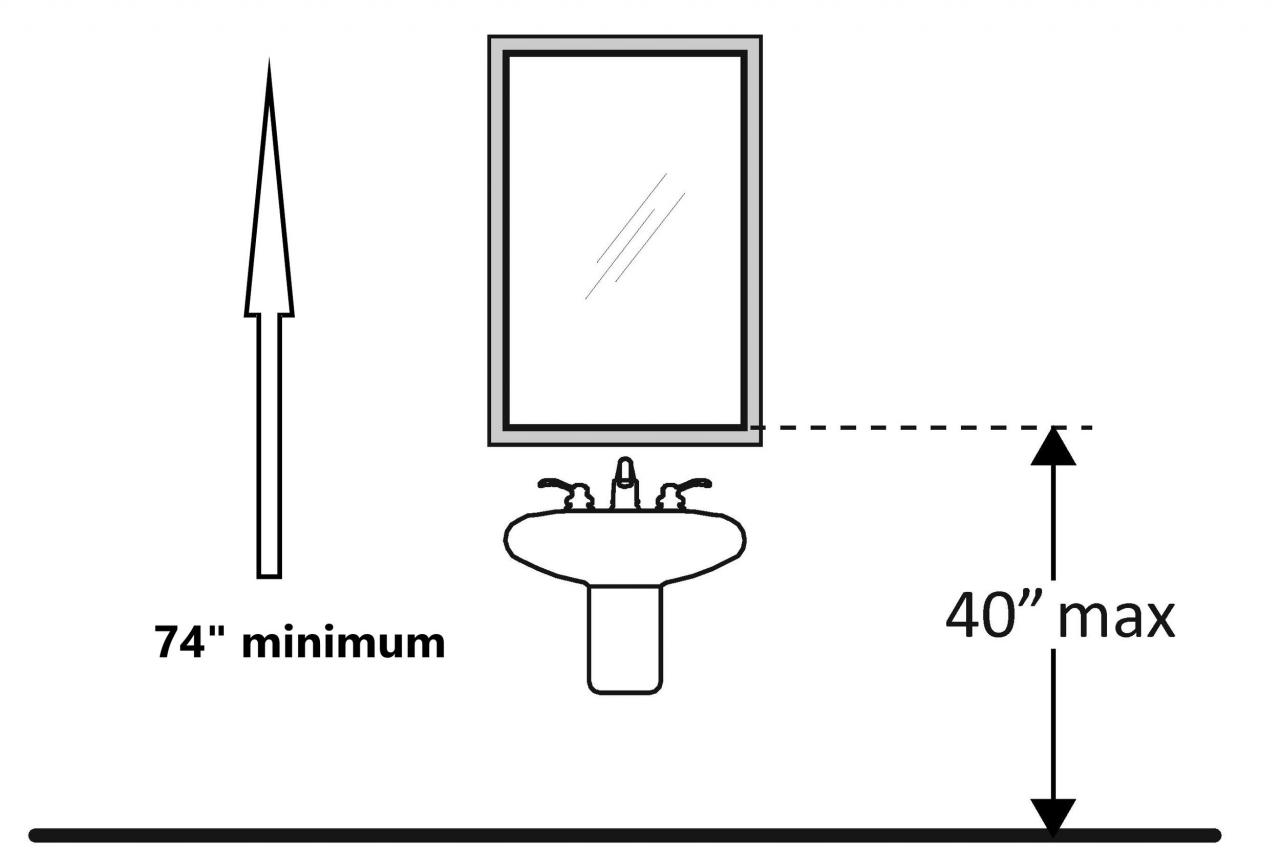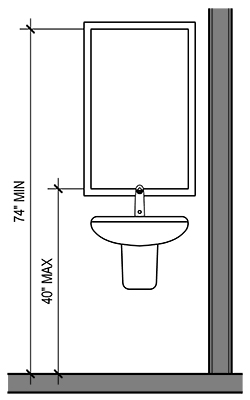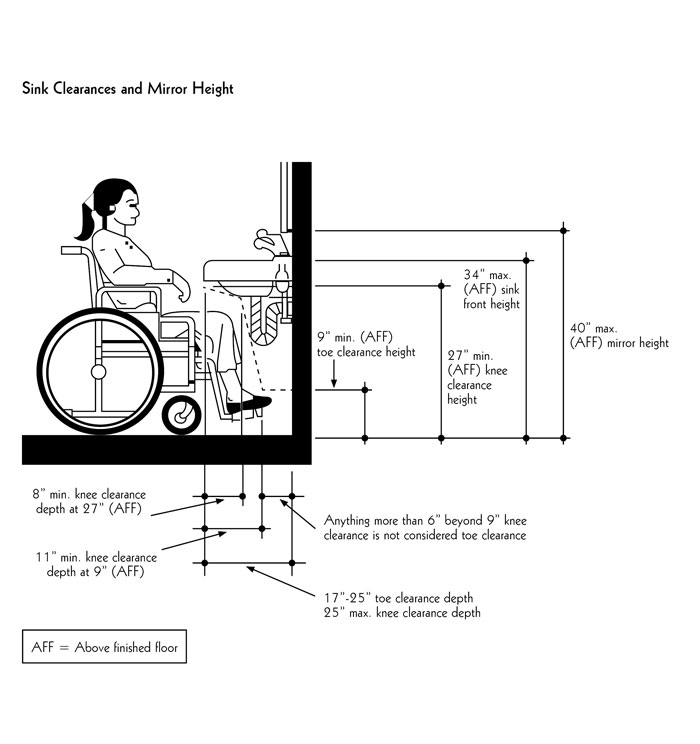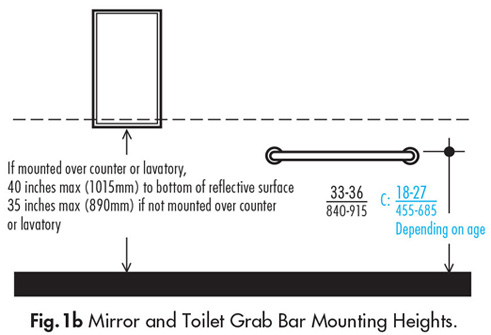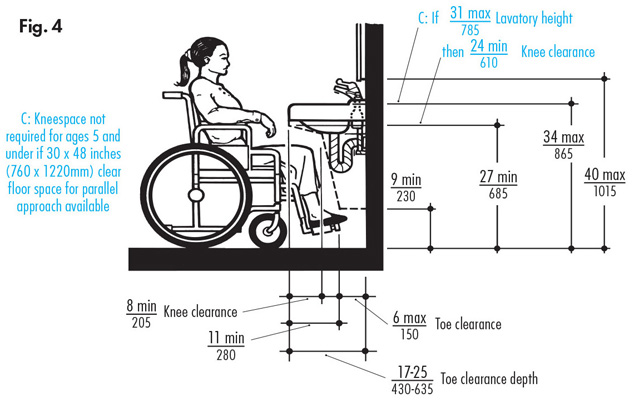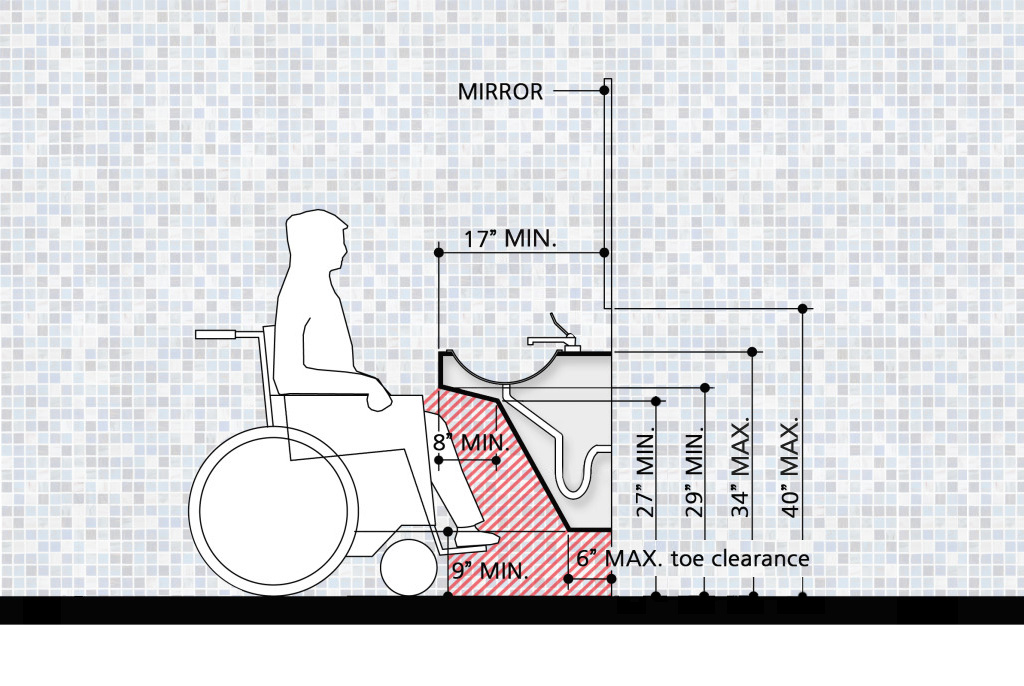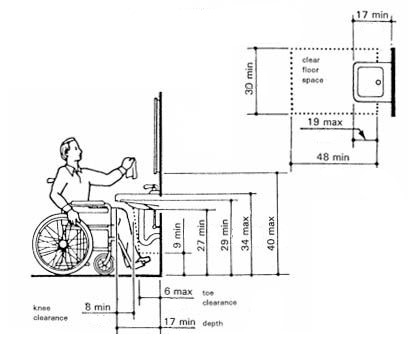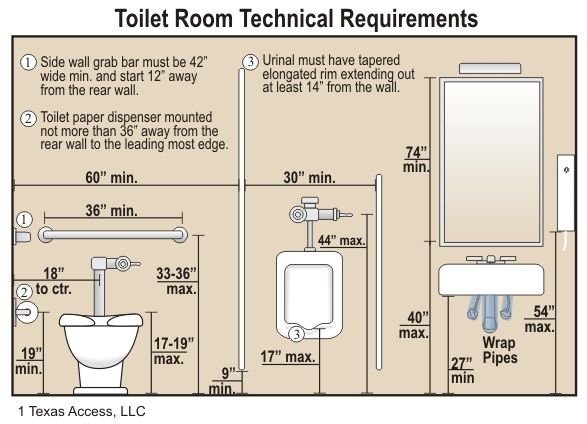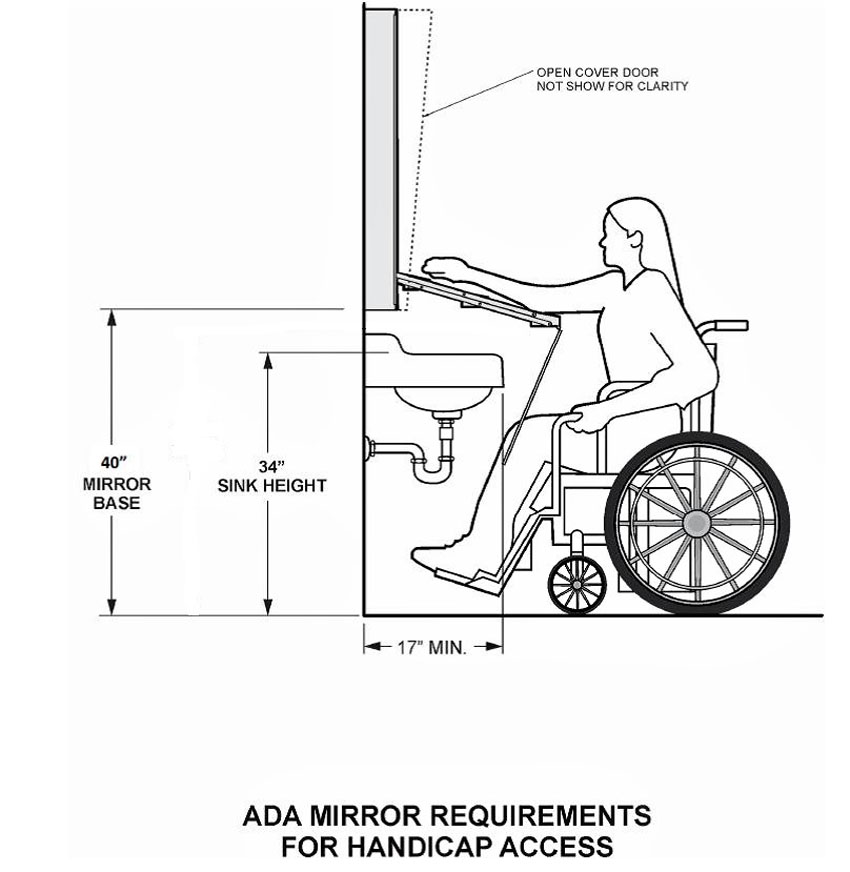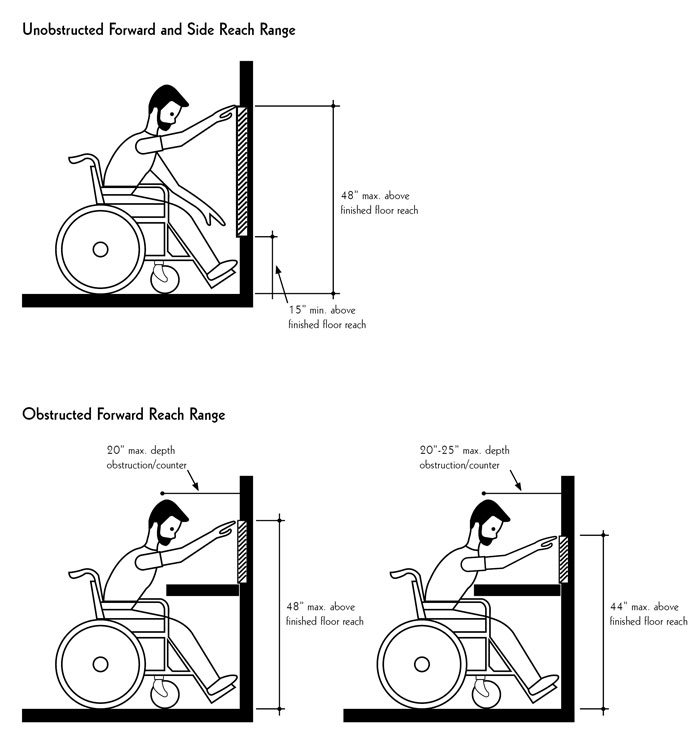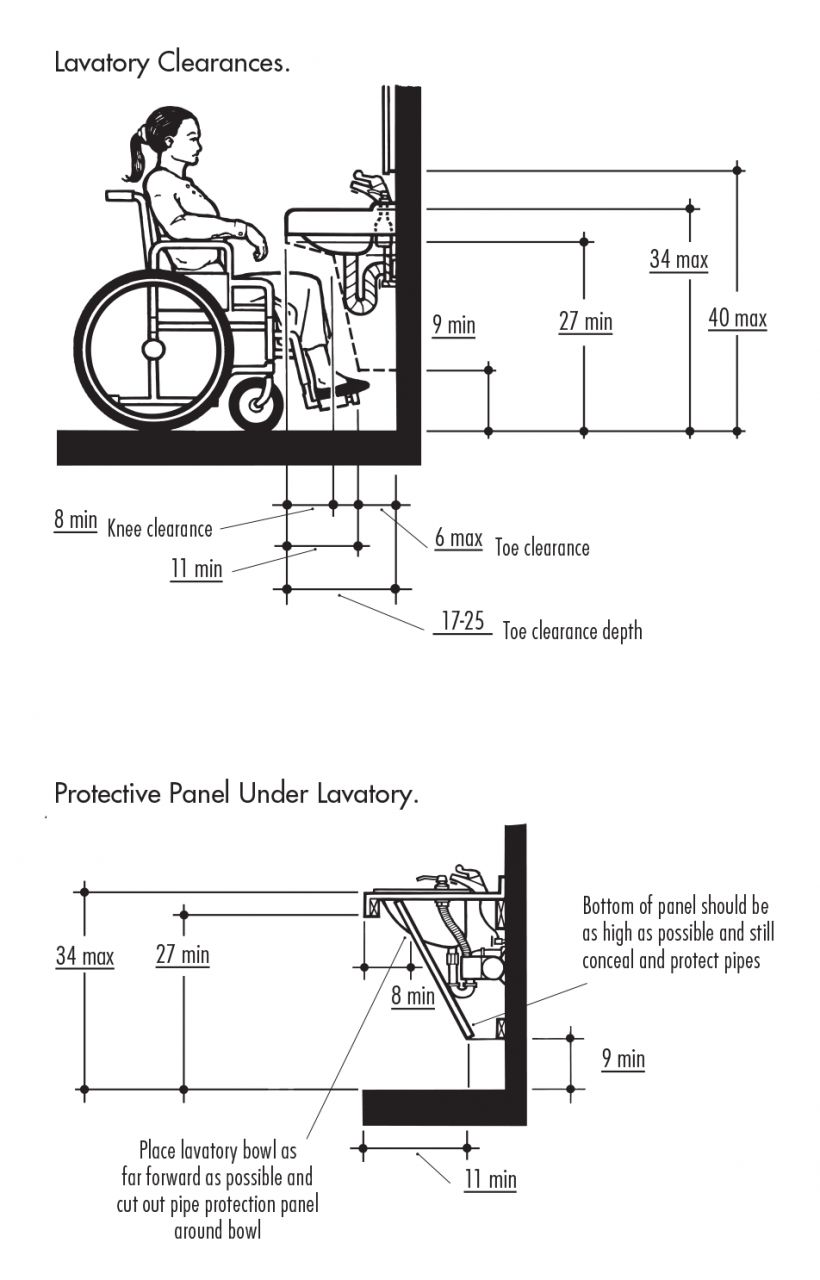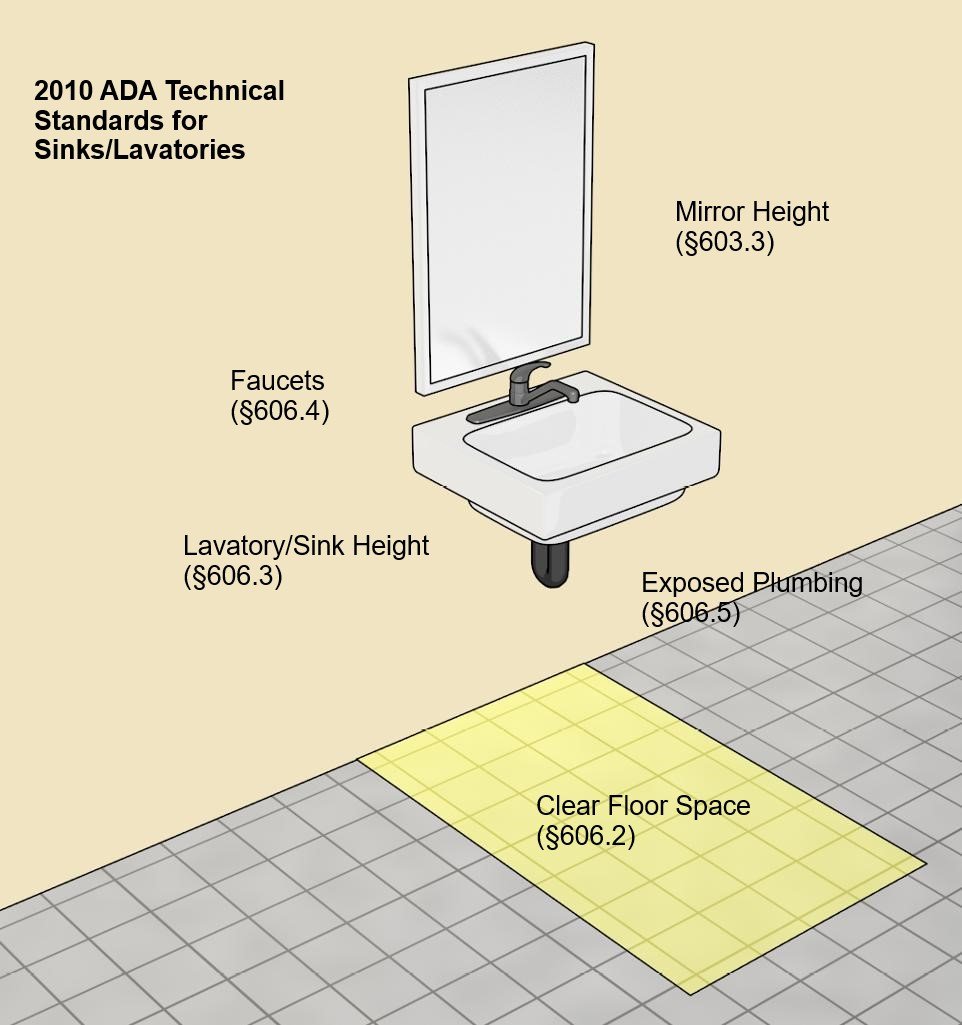ADA Compliant Bathroom Mirror Height
Bathroom mirrors are an essential component of any bathroom, offering practicality and style. But what height should a bathroom mirror be, and why does it matter? In many cases, the height of a bathroom mirror is regulated by the Americans with Disabilities Act (ADA), which sets guidelines for the design and construction of buildings to ensure accessibility and safety for individuals with disabilities.
The ADA requires that bathroom mirrors be mounted with the bottom edge of the mirror no higher than 40 inches above the finish floor. This height is specifically designed to accommodate individuals in wheelchairs, allowing them to easily view their reflection without having to strain their neck or reach.
By adhering to this height requirement, bathroom mirrors become more accessible to individuals with disabilities, promoting inclusivity and safety in public spaces.
However, the 40-inch height requirement is not the only consideration when choosing an ADA-compliant bathroom mirror. The location of the mirror is also important. The mirror should be positioned in a clear space, with no obstructions or barriers blocking the user’s line of sight. Additionally, the mirror should be mounted with a secure backing, to prevent it from falling or becoming dislodged.
When shopping for an ADA-compliant bathroom mirror, it’s essential to choose a product that meets these height and placement requirements. Many manufacturers offer bathroom mirrors specifically designed to be ADA-compliant, making it easy to find a mirror that fits your needs.
ADA-Compliant Bathroom Mirror Height
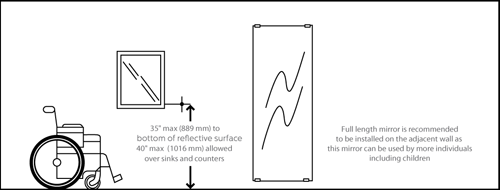
Why is the height of a bathroom mirror regulated by the ADA?
The height of a bathroom mirror is regulated by the ADA to ensure accessibility and safety for individuals with disabilities. The 40-inch height requirement is specifically designed to accommodate individuals in wheelchairs, allowing them to easily view their reflection without having to strain their neck or reach. By adhering to these height requirements, bathroom mirrors become more accessible to individuals with disabilities, promoting inclusivity and safety in public spaces.
What other factors should be considered when choosing an ADA-compliant bathroom mirror?
When choosing an ADA-compliant bathroom mirror, it’s essential to consider not just the height of the mirror, but also its location and secure mounting. The mirror should be positioned in a clear space, with no obstructions or barriers blocking the user’s line of sight. Additionally, the mirror should be mounted with a secure backing, to prevent it from falling or becoming dislodged.
The height of a bathroom mirror is a crucial aspect of any bathroom design, regulated by the Americans with Disabilities Act to ensure accessibility and safety for individuals with disabilities. When choosing an ADA compliant bathroom mirror, consider not just the height, but also the location and secure mounting of the mirror. By selecting a bathroom mirror that meets these requirements, you can create a safe, inclusive, and functional bathroom for everyone.
ADA Inspections Nationwide, LLC u2014 ADA Compliancy
ADA Accessible Single User Toilet Room Layout and Requirements
ADA Compliant Bathroom: Sinks and Restroom Accessories – LaForce, LLC
Accessories in Public Restrooms ADA Guidelines – Harbor City Supply
Accessories in Public Restrooms ADA Guidelines – Harbor City Supply
ADA Bathroom Planning Guide – Mavi New York
ADA Bathroom Planning Guide – Mavi New York
ADA Bathroom Layout Commercial Restroom Requirements and Plans
Accessible Restrooms Disability Smart Solutions, ADA inspector
CE Center – Healing Environments for Health Care
ADA Compliant Bathroom: Sinks and Restroom Accessories – LaForce, LLC
7 Important ADA Restroom Requirements For Your Commercial Space
ADA Inspections Nationwide, LLC u2014 ADA Compliancy
Related Posts:
- Bathroom Mirror Light Cover
- Bathroom Mirror Fixtures
- Rustic Bathroom Mirror Cabinet
- Ideas For Bathroom Mirror Frames
- Bathroom Mirrors Over Double Vanity
- White Plastic Bathroom Mirror
- Heated Bathroom Mirror
- Install Bathroom Mirror Without Drilling
- Installing A Bathroom Mirror
- Bathroom Mirror Over Pedestal Sink
